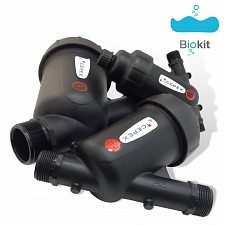Water supply filter: types, features, recommendations for choosing
It's no secret that the water that comes to our apartment from the central water supply is not drinkable. Even household tasks such as washing dishes or laundry require a certain level of water quality. A qualitative improvement in tap water performance is possible only when using filters for purifying tap water. There is a huge selection of filter systems, from the most inexpensive to the most efficient, bringing the water performance to almost ideal. In this article, we will show you how to choose a water filter, tell you about the existing varieties and operating rules.
In this article, you will learn:
What are the features of a water coarse filter
What are the features of a fine water filter
What are the features of the main water filter
Coarse water filter: types and maintenance
Any owner of his own home that is not connected to the central water supply system does not even have questions about the need to install a filter on the water pipe. Water from a well or well must go through a cleaning cycle from impurities of dirt, sand, harmful microorganisms, etc. This situation does not even require discussion. A tap water filter is a necessary attribute in the private residential sector. But apartment owners are not so categorical in their beliefs, and many of them have doubts about the need to install a water filter.
Of course, the central water purification system presupposes the presence of mechanical filters that trap solid particles, and chemical treatment that neutralizes the effect of pathogenic microorganisms on the water. But the water, passing through the entire plumbing system, absorbs rust, mineral deposits and fungal formations from the inner walls of the pipeline. In this form, this liquid enters our apartment. In order for the quality of water to rise to the level of drinking water, it is necessary to install a multi-stage purification system.
The absence, for example, of a coarse water filter, will lead to the need to quickly replace the seals on all plumbing fittings. A coarse filter is required for the normal operation of household appliances connected to water. Without it, the mixers will quickly fail in the home water supply system, clogged with dirt and debris.
A coarse water filter is often equipped with a metal mesh with fine meshes that trap all solid impurities. Then the water can go to a fine filter or go directly to the mixer.
Filters for tap water in an apartment work according to a similar principle, but may differ in material of manufacture, shape, method of insertion into the pipe, type of filter element and method of removing accumulated residues.

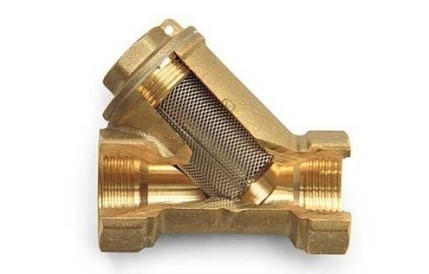
One of the most popular types of coarse water filters. A stainless steel microcellular mesh acts as a filtering element. The size of the cells may vary depending on the model in the range of 50-400 microns. It has a long service life and does not require replacement of consumables (they are simply not available in this type of filter). The models differ from each other only by the method of insertion into the pipe, the method of cleaning and the arrangement of the filter elements relative to each other.

Here, the differences are only in the method of tapping into the water pipe. If the diameter of the water supply pipe is equal to or greater than two inches, then a flanged type of filter is installed. Due to their large diameter, such filters are installed on water mains and at junctions of apartment buildings.
Flanges are mounted on bolts or studs, which greatly facilitates their dismantling without the need to disassemble other elements of the plumbing system. The presence of such flanges must be included in the project of the house at the very beginning of construction.
The apartments use coarse water filters with threaded connections. Such a filter is mounted directly on the water pipe or is docked with it with "American" nuts (captive quick-release nuts).
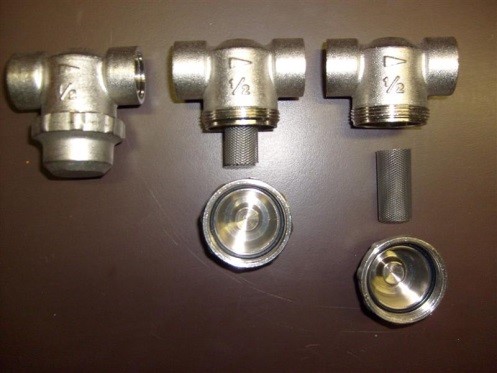
A coarse water filter consists of two nozzles (at the inlet and at the outlet) and a reservoir (sump) in which the water is filtered. The direction of the tank relative to the axis of the water pipe divides filters into two categories: oblique and straight.
The reservoir at straight-line water filters "looks" downward (perpendicular to the water flow). The size of the tank affects the speed of the water flow (the larger it is, the lower the speed). The heavy particles remain at the bottom of the sump, and the water is directed further to the mesh with microcells that trap smaller impurities.
It is not difficult to determine the filter for the water pipe with an oblique arrangement of the reservoir. This option is preferable in conditions of a minimum distance between water pipes or between a pipe and a wall. A plug or flange cap is screwed onto the end of its reservoir.
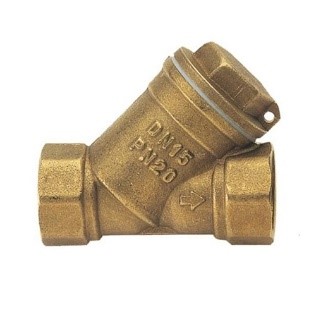
Mud traps with flushing system
The filter element cleaning method divides such filters into two categories: non-flushing and flushing filters. Oblique filters, as well as some direct ones, are referred to as non-flush filters. Cleaning such filters involves disassembling the case by unscrewing the plug or cover.
Cleaning systems for filters with a direct arrangement of the tank have a drain valve for draining sediment from impurities.

Flask type filters are often used in apartments with a plastic case on the outside and a filter element (replaceable cartridge) on the inside. There can be several such flasks in the filter, depending on the degree and level of filtration.
The cartridge can be made of polyester, in the form of twisted threads or compressed fibers. The filtration rate of each cartridge is measured in microns. For example, for coarse water filters, this figure is 20-30 microns.
In most cases, flask filter cartridges are not serviced, but are replaced with new ones as they become clogged. By default, the flask filter should become the second stage of water purification after the coarse filter.
Installation and maintenance
Installation and further operation of a household water filter has its own characteristics, which should not be forgotten.
It is advisable to install a coarse filter at the water inlet to the apartment, in front of the meters. Due to the limited space, filters are usually mounted with an oblique arrangement of the tank. In any case, such a filter will be able to save the meter and other elements of the system from rapid clogging and failure.
For correct operation of the filter, it is mounted horizontally, with the reservoir pointing downward, which will simplify the cleaning procedure. An arrow on the product body will indicate the correct direction for installing the filter. In some cases, oblique water filters are installed vertically, while the direction of water flow should go from top to bottom.
Filters with a straight flask are mounted exclusively on horizontal sections of the water supply. The installation must take into account the possibility of unimpeded service of the filter.
For filters with a direct flush system, it is possible to equip a back flush system. This is done by adding a bypass loop with taps to the water supply system with the ability to switch the direction of water flow from direct to opposite.
In any filter, you periodically need to take out the filter element for replacement or cleaning. This is especially true for filters that do not have a flushing system. A similar procedure involves blocking the water supply (closing the inlet taps), thereby relieving the pressure in the system.
For filters with an oblique connection, the removable nut has hexagonal slots for easy unscrewing with a regular wrench.
Advice: to simplify dismantling and maintain the tightness of the plug fastening, it is necessary to replace the complete paronite gasket with tow roll.
For filters with a vertical arrangement of flasks, the filtering element can be dismantled using a shaped wrench (usually included in the filter kit) or standard wrenches. When replacing the filter element, pay attention to the condition of the gaskets and seals.
The oblique filter on the water pipe is disassembled, having prepared a container for draining the dirt in advance. At the same time, the filter element (mesh) is thoroughly cleaned by rinsing it with the pressure of water or air from the compressor. The grid is changed to a new one as needed.
In straight-line tap water filters, unscrew the flask and discard the accumulated sediment. Replace the cartridge as it becomes clogged.
Filters equipped with a flushing system do not require disassembly. To clean such a water supply system from dirt, it is enough to regularly flush with water under pressure by opening a special tap.
Fine water filter
Coarse filters do an excellent job of their task, but the presence of mechanical impurities in the water is far from the only problem. Tap water contains, in various forms, compounds of mineral salts and organics. In most cases, the quality of such water does not meet drinking standards.
Modern tap water filters can change the composition of water to a state that does not require boiling.
Sorption filters for cleaning
Sorption cleaners are capable of trapping microparticles of rust, sand, clay and other impurities 20–40 µm in size. They usually have a long service life and high throughput per unit of time. Some of these purifiers can disinfect tap water with silver, fluoride, or iodine.
Activated carbon (in granules) most often acts as a sorbent, sometimes aluminosilicates. The property of activated carbon to absorb substances such as pesticides, heavy metal salts, excess calcium, chlorine and radioactive compounds make this absorbent one of the most versatile. Aluminosilicates absorb salts of heavy metals, harmful microorganisms, normalize the PH-level of water.
The scope of application of sorption-type water filters is very extensive, ranging from household devices (jug type and stationary) to high-performance systems mounted on main water pipes. Their recovery is due to the reverse direction of the water flow.
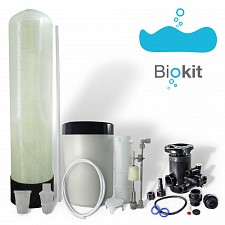
The body of ion-exchange cleaners is made of plastic or stainless steel. Inside is a reservoir for brine and ion exchange material. Tap water is passed through several filter elements, leaving heavy metal ions in them.
The productivity of such cleaners depends on a number of indicators:
the chemical composition of tap water;
filter element;
ambient temperature.
Some of the main disadvantages of such cleaning systems are:
small resource of the filter element;
the need for the disposal of consumables;
complicated maintenance procedure (regeneration tanks required).

Tap water in such filters is passed through a membrane with cells up to three microns in size. This mesh size allows only water molecules to pass into the next filter compartment. All harmful microorganisms and chemical compounds of any form remain on the membrane. This type of purifier has a fairly long service life of the main filter element (membrane).
A pressurized pump delivers tap water to the diaphragm through the inlet. At the outlet, the water is divided into two reservoirs. In the first - permeate (water with the highest possible degree of purification), and in the second (drainage collector) - a solution with impurities filtered by the membrane.
The filtration level can be determined by the size of the cells (micropores) of the membrane:
no more than 1 micron - microfiltration level;
no more than 0.1 microns - ultrafiltration level;
no more than 0.01 microns - filtration at the nanoscale;
up to 0.001 microns - reverse osmosis.
Molecular purification of reverse osmosis systems removes all microorganisms from tap water, including pathogenic bacteria and heavy metal compounds. The water leaving such a filter has a minimum degree of mineralization (about 20% of the original). In some cases, low-mineralized water is necessary, but this is also a disadvantage of such filtration systems.
Filter maintenance
Each type of filter installed on a water pipe has its own maintenance rules:
The sediment type requires regular washing of the metal mesh (filter element). The procedure involves relieving water pressure by shutting off the taps at the inlet of the water supply to the apartment. The frequency with which the tank is checked depends on the degree of contamination of the incoming water.
Disc-type filters are removed from the water supply system, unscrew the housing and rinse all filter elements (discs). If necessary (high degree of contamination), use a brush for cleaning.
After the end of the resource, polypropylene cartridge-type cleaners are replaced with new ones. Most filter element manufacturers label them with the filter capacity, measured in liters. But when calculating the service life of the filter element, the initial water quality must also be taken into account. The service life of the cartridge can be measured in several months, but in the event of a sharp deterioration in water quality, the filter instantly clogs.
Reverse osmosis purification systems have different types of fillers, which largely determines the period of their replacement. The pre-filter cartridges are changed approximately every six months, the carbon filter (at the system outlet) is changed once a year, and the membrane itself can last from two to two and a half years. Before replacing the cartridges, remember the order in order for correct installation. After replacing one or all of the filter elements, the water from the storage tank can be used by running a few liters of water through it empty.
If the filter has not been used for a long time (three or more months), then the water should be disinfected. In the case of a large accumulation of microorganisms on the water pre-filter, the water is exposed to ultraviolet light.
Types and purpose
Post-treatment of tap water. The water coming to our taps from the central water supply is often treated only by chlorination. It is known that chlorine cannot remove all bacteria in water, heavy metal salts and carcinogenic substances.
Improving the taste of water. The taste sensation is influenced by various substances contained in tap water, such as chlorine, hydrogen sulfide, ferrous compounds. The use of a main purifier allows you to improve not only the taste of the water itself, but also the food prepared on it.
Reducing water hardness. The quality of tap water is also affected by such a parameter as hardness. High values of this indicator lead to negative effects on human skin and hair. With constant use of such water, skin rashes may appear, and the structure of the hair will be disturbed.
Increased service life of household appliances. Additional purification of water from the central water supply system allows you to get rid of solid suspended impurities in the water, including rust, which significantly reduce the service life of plumbing fixtures and household appliances in contact with water.
Main water supply filters have their own classification according to the degree of filtration. They may be:
Rough(primary) cleaning... As a filter element, a fine mesh mesh is installed in them, which retains solid impurities contained in the water. It needs to be cleaned as it gets dirty to maintain the capacity of the line. In more advanced types of main filters, a multi-stage cleaning system is installed, consisting of several meshes. Each subsequent grid has a smaller mesh size. Thus, the water is purified to a level that is sufficient for technical needs.
Fine cleaning... The design of such a purification system is as follows: an inlet strainer is placed in front of a flask cartridge capable of absorbing the smallest particles ranging in size from 1 to 20 microns. The established standard for such cartridges is the retention of impurities up to 5 microns in size.
As a rule, in-line filters are installed in tandem with other filtering devices, for example, with a water softener. This makes the water suitable for cooking and prolongs the life of the household appliances. The softener can be a magnetic (reagentless) filter that retains mineral salts in the form of sediment. Fine filters are mounted exclusively after the coarse cleaning system, otherwise dirt residues will quickly "clog" such a filter, and it will need to be changed frequently.
There is also such a category of equipment as a cleaning system with a granular load. In fact, this is a main filter with a full cleaning cycle. Such a system allows you to get rid of chemical and organic impurities, harmful microorganisms. In appearance, it is a large container with a capacity of 16 to 400 l / min. Installing this type of main filter on a water pipe can significantly reduce water hardness and carry out a full cleaning cycle. The only drawback of these systems is their large size.
How to choose a main filter
Do not forget that apartment buildings are equipped with two water mains (for cold and hot water). In private houses, where a local heating system is provided, an additional cold water filtration system is required.
The types of main filters designed for hot water can withstand high temperature loads, but they can also be used for cold water. But reverse interchangeability is not allowed!
To guide you when choosing a main filter for a water pipe, it is worth considering:
The value of the loss of the nominal pressure in the system... It can be between 0.1 and 0.6 bar, and in some cases even more. A small water pressure may require the installation of a pump for the line.
Filter throughput.
Planned volume of water consumption(more is better than less).
Filter housing size and form factor... Most manufacturers produce filters in the Slim Line and Big Blu series. One of the best water filters for apartments is the 10 '' Big Blu. It has a 184mm blue body and a 10 '' cartridge. Filters of this type do an excellent job with the retention of chlorine compounds, salts of heavy metals, organics, soften water. Slim Line systems have a smaller diameter - from 114 to 130 mm. Main filters with red or orange body color (or stainless steel) are designed for hot water, blue or transparent filters for cold water.
Filter element properties... There are corresponding neutralizers for each type of contamination.
Modern coarse strainers for the main line have a multilayer structure located in a steel pipe. They are capable of trapping particles up to 50 microns in size. Models of filters with a flushing function are most preferred. They are more productive and less troublesome to maintain. It is worth paying attention to the correspondence of the diameter of the water pipe to the pipes on the filter.
The main filter is installed on the water pipe, and it is recommended to install a bypass and shut-off taps on sectors with water supply and discharge. For ease of maintenance, the cartridge should be placed in a convenient location.
When choosing one or another system of water filters, it can be difficult to take into account all the nuances. Therefore, we recommend contacting professionals. There are many companies on the Russian market that are developing water purification systems. It is quite difficult to choose one or another type of water filter on your own, without the help of a professional. And even more so, you should not try to mount a water treatment system yourself, even if you have read several articles on the Internet and it seems to you that you figured everything out.
It is safer to contact a filter installation company that provides a full range of services - specialist advice, analysis of water from a well or well, selection of suitable equipment, delivery and connection of the system. In addition, it is important that the company provides filter service as well.
our company Biokit offers a wide range of reverse osmosis systems, water filters and other equipment capable of returning tap water to its natural characteristics.
The specialists of our company are ready to help you:
connect the filtration system yourself;
understand the process of choosing water filters;
pick up replacement materials;
troubleshoot or solve problems with the involvement of installers;
find answers to your questions by telephone.
Trust Biokit systems for water treatment - keep your family healthy!
